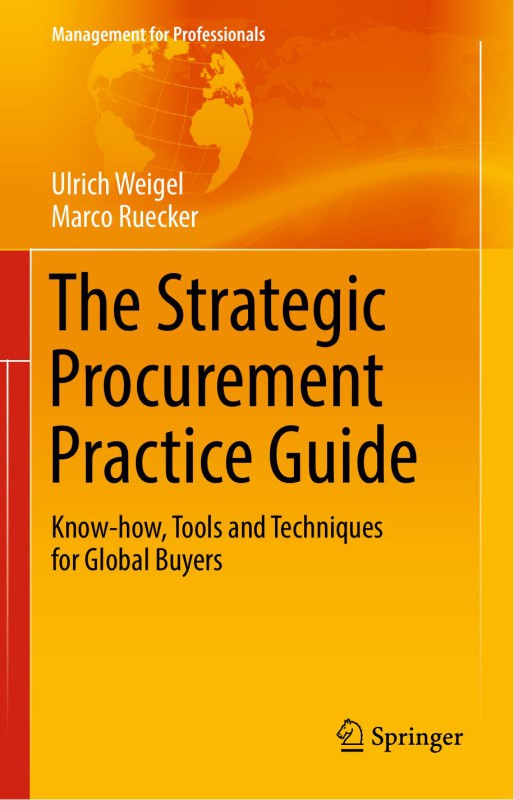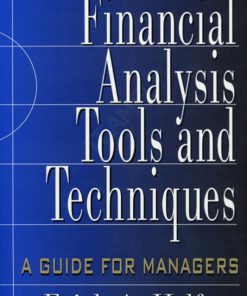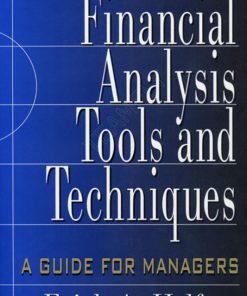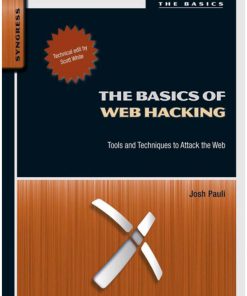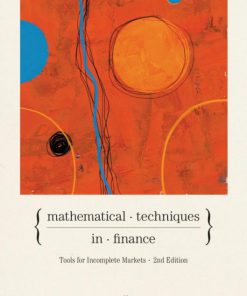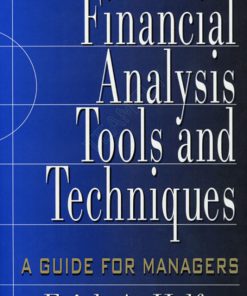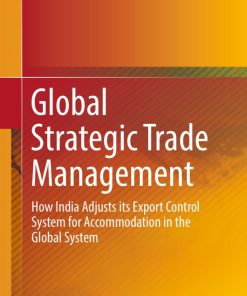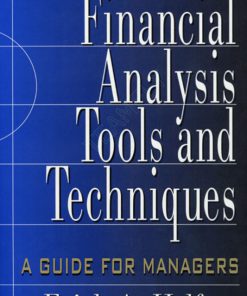The Strategic Procurement Practice Guide Know how Tools And Techniques for Global Buyers 1st Edition by Ulrich Weigel, Marco Ruecker 331957650X 9783319576503
$50.00 Original price was: $50.00.$25.00Current price is: $25.00.
Authors:Ulrich Weigel, Marco Ruecker (auth.) , Series:Strategic Studies [19] , Author sort:Ulrich Weigel, Marco Ruecker (auth.) , Languages:Languages:eng , Published:Published:Jun 2017 , Publisher:Springer
The Strategic Procurement Practice Guide Know how Tools And Techniques for Global Buyers 1st Edition by Ulrich Weigel, Marco Ruecker – Ebook PDF Instant Download/Delivery. 331957650X, 9783319576503
Full download The Strategic Procurement Practice Guide Know how Tools And Techniques for Global Buyers 1st Edition after payment
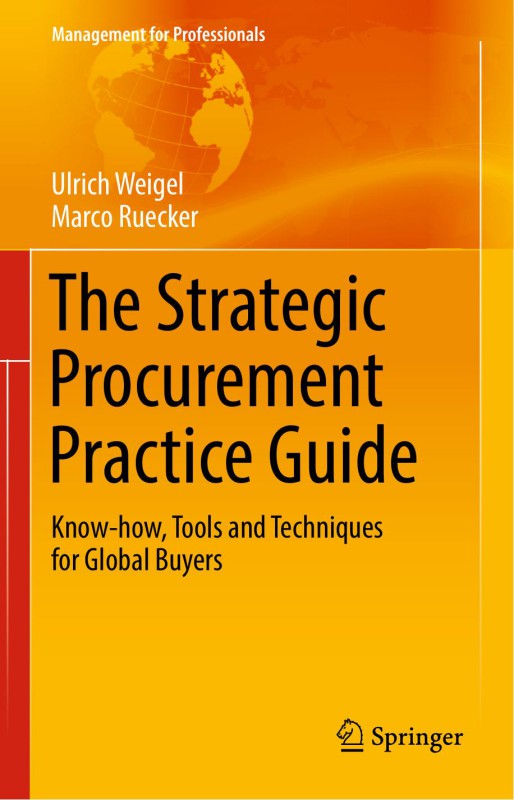
Product details:
ISBN 10: 331957650X
ISBN 13: 9783319576503
Author: Ulrich Weigel, Marco Ruecker
This practice guide on procurement strategy brings together methods and tools used by global purchasers across different industries. The authors lay major focus on the themes of global sourcing, risk management, and the dynamic topic of negotiation strategy. The authors present their perspectives on all important questions of strategic procurement such as: how to manage a heterogeneous supplier structure across different branches and how to deal with partners from diverse cultures? How to solve procurement crisis and proactively avoid them? How does off-shore team management work and how to increase the value-add for both internal and external purchasing? These themes are discussed along with numerous practice-based cases. The authors lay an ideal ground for global purchasers to help with their strategic and operational needs, including technological topics such as e-procurement.
The Strategic Procurement Practice Guide Know how Tools And Techniques for Global Buyers 1st Table of contents:
1: Principles of Modern Purchasing
1.1 Introduction
1.2 Purposes and Aims of Purchasing
1.2.1 Operational Purchasing
1.2.2 Strategic Purchasing
1.2.3 Project Purchasing
1.3 The Growing Importance of Purchasing Within the Company
1.4 Future Challenges to Purchasing
2: The Strategy of Purchasing
2.1 Strategic Principles
2.2 Principles of the Purchasing Strategy
2.3 The Process of Developing a Strategy
2.3.1 Strategic Analysis
2.3.1.1 Analysis of the Internal Requirements
2.3.1.2 Analysis of the External Environment
2.3.1.3 SWOT Analysis
2.3.2 Target Setting
2.3.3 Strategy Development
2.3.3.1 Commodity Group Strategy
2.3.3.2 Supplier Strategy
2.3.4 Tactical Implementation
2.3.5 Commercial
References
3: The Purchasing Organisation
3.1 Introduction to the Organisation
3.2 Structural Organisation
3.2.1 Centralised Purchasing
3.2.2 Decentralised Purchasing
3.2.3 The Lead Buyer Concept
3.2.4 Outsourcing of Purchasing Activities
3.3 Operative Organisation
3.3.1 The Purchasing Process
3.3.1.1 Assessment of Demand
3.3.1.2 Enquiry
3.3.1.3 Evaluation of Tenders
3.3.1.4 Award
3.3.1.5 Purchase Order
3.3.1.6 Order Confirmation
3.3.1.7 Supervision and Control of Deadlines
3.3.2 Roles in the Decision-Making Process
3.3.3 Process Optimisation
3.3.3.1 Quantity Contracts
3.3.3.2 Consignment Stores
3.3.3.3 Special Price Agreements
3.3.3.4 General Terms and Conditions of Purchase
3.3.4 Project Purchasing
Reference
4: Supplier Management
4.1 Introduction to the Supplier Management
4.2 Supplier Strategy
4.3 Supplier Selection
4.3.1 Supplier Identification
4.3.2 Supplier Analysis
4.3.3 Supplier Selection
4.4 Supplier Evaluation
4.5 Supplier Development
4.6 Supplier Controlling
4.7 Conclusion
Reference
5: Global Sourcing
5.1 Principles of Global Purchasing
5.1.1 Aims of Global Sourcing
5.1.2 Strategies and Manifestations
5.1.3 New Risks at the International Level
5.2 China as an Example of Global Sourcing
5.2.1 Incentives and Problems with Regard to Sourcing in China
5.2.2 Sourcing in China: Development Stages
5.2.3 Implementation
5.2.3.1 Identification of Suitable Products
5.2.3.2 Feasibility Studies and Market Tests
5.2.3.3 Supplier Evaluation
5.2.3.4 Supplier Development
5.2.4 In-house Resistance
5.3 Compliance
5.4 Protection of Know-How
5.5 Cultural Peculiarities
5.6 Future Prospects
Reference
6: Risk Management with Regard to Purchasing
6.1 Principles of the Risk Management
6.1.1 Definition of the Risk Concept
6.1.2 Legal and Financial Framework Conditions
6.1.3 The Economic Importance of Risks
6.1.4 Risk Management in Purchasing
6.2 The Risk Management Process
6.2.1 Identifying Purchasing Risks
6.2.2 Evaluation of the Purchasing Risks
6.2.3 Controlling the Purchasing Risks
6.2.4 Risk Control
6.3 Special Safeguarding Against Supplier Risks
6.3.1 Analysis of the Supplier Portfolio
6.3.2 Reactive Risk Management
6.3.3 Active Risk Management
6.3.4 Pre-emptive Risk Management
6.3.5 Long-Term Measures
References
7: Methods and Tools for Everyday Purchasing
7.1 Procurement Market Research
7.1.1 Types of Procurement Market Research
7.1.2 Procedure
7.1.3 Sources of Information
7.1.4 Areas of Application
7.2 Value Analysis
7.3 ABC Analysis
7.4 Portfolio Technique
7.4.1 Commodity Groups Portfolio
7.4.2 Supplier Portfolio
7.5 Price Structure Analysis
References
8: The Purchasing Negotiation
8.1 The Principles of a Purchasing Negotiation
8.1.1 Motives for Purchasing Negotiations
8.1.2 Negotiating Strategies
8.2 Preparation
8.2.1 Organisational Preparation
8.2.2 Supplier Negotiation Form
8.2.3 Negotiation Targets
8.3 Communication and Body Language
8.3.1 The Communication Square
8.3.2 Nonverbal Communication
8.4 Negotiating Stages
8.5 Negotiating Methods
8.5.1 Competitive Negotiating
8.5.1.1 Basic Pattern of Competitive Negotiating
8.5.1.2 The Power Factor
8.5.1.3 The Time Factor
8.5.1.4 The Information Factor
8.5.1.5 The Complexity Factor
8.5.1.6 “Dirty Tricks´´
8.5.2 The Harvard Concept
8.6 Peculiarities in International Negotiations
8.6.1 The Ritual of Exchanging Business Cards
8.6.2 The Beginning of the Talks
8.6.3 Laughing: An Asiatic Means of Managing Conflicts
8.6.4 Lose One´s Face
8.6.5 Other Peculiarities
8.6.6 Conclusion
8.7 Evaluating the Success of Negotiations
References
9: Personnel Development in Purchasing
9.1 The Principles of Personnel Development
9.2 Requirements for the Modern Buyer
9.2.1 Identifying Potential with the Transactional Analysis
9.3 Purchasing as a Managerial Function
9.4 A Career in Purchasing
Reference
10: e-Procurement
10.1 Basics of e-Procurement
10.1.1 Conceptual Definition
10.1.2 Basic Types of e-Sourcing Models
10.1.2.1 e-Tender
10.1.2.2 e-Auction
10.1.2.3 e-Collaboration
10.1.3 Basic Types of e-Ordering Models
10.1.3.1 Sell-Side Models
10.1.3.2 Buy-Side Models
10.1.3.3 e-Marketplace Models
10.1.4 Aims of e-Procurement
10.1.4.1 Financial Objectives
10.1.4.2 Process Objectives
10.1.4.3 Information Goals
10.1.4.4 Market Objectives
10.2 Practical Application of e-Auctions
10.2.1 Preparing for the e-Auction
10.2.2 Supplier Acquisition
10.2.3 Creating an Electronic Invitation to Tender
10.2.4 Executing an Auction Event
10.2.5 Verification of Auction Results
10.2.6 Long-Term Implementation of e-Auctions
10.3 Determining the Potential of e-Ordering
10.3.1 Requirements and Supplier Analysis
10.3.2 Consideration of Representative Market Solutions
10.3.2.1 Marketplace Solution: Mercateo
10.3.2.2 Simple-System Procurement Platform
10.3.2.3 Pool4Tool System Solution
10.3.3 Cost-Benefit Analysis
10.3.3.1 Cost Analysis
10.3.3.2 Potential Benefits in the Procurement Process
10.3.3.3 Further Potential
10.3.4 Critical Success Factors
10.3.4.1 Utilising Technological Potential
10.3.4.2 Learning and Adjustment Effects
10.3.4.3 Considering the Consequences of Delegation
10.3.4.4 Using the Compound Effect and Network Effects
10.3.4.5 Further Recommendations
People also search for The Strategic Procurement Practice Guide Know how Tools And Techniques for Global Buyers 1st:
what are the procurement strategies
what are the best procurement strategies
what are the key elements of procurement
the strategic sourcing process
You may also like…
eBook PDF
Mathematical Techniques in Finance Tools for Incomplete Markets 1st edition by Aleš Černý

